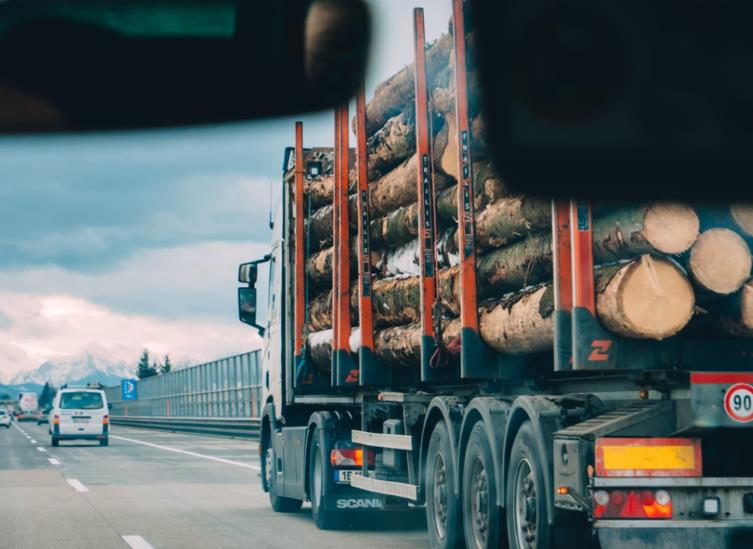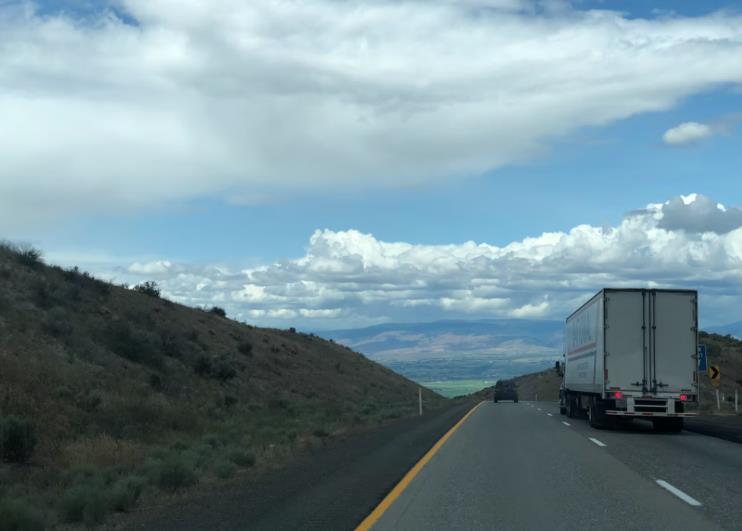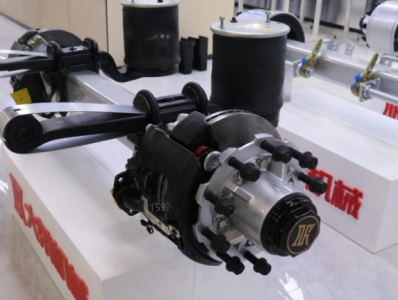How to solve the common clutch failure?
The clutch is one of the essential devices on the manual transmission vehicle, installed between the engine and the transmission, is the engine and the transmission of power between the vehicle. It can be said that the status of the clutch directly affects the dynamic performance of the vehicle.

The clutch is mainly composed of clutch friction plate, clutch pressure plate and clutch separation bearing, also known as the "clutch three-piece set". The clutch pressure plate is the most important part of the clutch assembly, which determines whether the clutch will tremble, be too heavy, and the length of use time after installation; The clutch friction plate determines the service life of the clutch and the effect of shock absorption and noise reduction. Clutch release bearing is an important part of clutch release system trailer axle, which determines the separation efficiency of clutch system and the wear rate of pressure plate separation.
If there is a problem with any part of the clutch three-piece set, it is generally not replaced separately, but replaced together with the three-piece set. Clutch three-piece replacement cycles vary from car to car. If it is normal loss, it can generally be used for about 100,000 kilometers, but there are not a few vehicles that replace the clutch for 50,000 or 60,000 kilometers, the main reason is that the use of improper methods.
The DARO trailer axle summarizes the following methods that owners can use to determine if their vehicle's clutch should be replaced:
1. The vehicle lacks power, especially when climbing, it feels boring;
2, when the vehicle needs to accelerate, the engine speed rises fast, but the vehicle speed is slow;
3. When the vehicle is hung into gear 1, pull the handbrake or step on the brake to start, the vehicle does not stall;
4. When opening the cabin cover, you can smell the obvious burnt taste, especially at the junction of the engine and transmission.
Some owners in the use of the clutch, found that there is always slippage, separation is not complete, shaking, abnormal sound and other phenomena, in this case do not need to replace the clutch? In fact, some faults can be eliminated by independent maintenance, owners can repair themselves according to the following methods.

1, the clutch slip
(1) Fault symptoms:
The vehicle can not start smoothly after loosening the clutch pedal.
When accelerating, the speed can not be increased with the engine speed, the driving is weak, and the phenomenon of burning odor or smoke is generated in serious cases.
The engine did not turn off when it was supposed to.
(2) Possible reasons:
Clutch pedal free travel is too small or no free travel.
The connection between the clutch pressure plate and the flywheel is loosened trailer axle, and the compression force is weakened.
The oil pollution between the separation bearing sleeve and the conduit is serious, and the separation bearing cannot be returned.
The surface of the clutch plate is ablated, hardened or there is oil, resulting in reduced clutch friction.
The clutch disc, pressure plate or flywheel face is seriously worn.
The pressure spring is weak or broken, the diaphragm spring is weak or cracked, and the compression force is reduced.
(3) Maintenance steps:
① Check whether the free travel of the clutch pedal is suitable, and adjust it if it is not suitable. It should be noted that the hydraulic type is mostly self-adjusting;
② Remove the transmission, disassemble the clutch and check in turn:
The clutch disc, the separation bearing sleeve and the conduit should be cleaned in time if there is oil;
Clutch disc, pressure plate or flywheel face should be replaced in time if serious wear;
Pressure spring, diaphragm spring is weak, broken or insufficient elasticity, if insufficient elasticity or damage should be replaced in time.

2, clutch separation is not complete
(1) Fault symptoms:
When the vehicle is idling, the clutch pedal is pressed, and the gear strikes when the gear is in gear, and it is difficult to hang in.
Even if it is barely in gear, the engine shuts off when the clutch pedal is not fully relaxed.
(2) Possible reasons:
Clutch pedal free travel is too large.
If it is hydraulic, it is not ruled out that the oil leakage of the hydraulic system causes insufficient oil or air intrusion.
The new clutch plate is too thick or the front and back of the clutch plate are wrong (the raised side faces the transmission).
The steel plate is warped, the friction plate is broken or the rivet is loose.
Improper adjustment of the separation lever or the bending deformation of the separation lever, the loosening of the support, and the removal of the support pin make the height of the inner end of the separation lever difficult to adjust.
(3) Maintenance steps:
① Check whether the free travel of the clutch pedal is suitable, if the free travel is too large, it should be adjusted;
② Check whether the hydraulic system pipeline and pipe joint are leaking oil;
(3) Check whether the installation direction of the clutch disc is correct, if there is deformation or damage should be replaced in time;
(4) Check whether the separation lever is deformed, whether the support is loose, and whether the separation lever adjustment is appropriate;
⑤ Check whether the first shaft of the transmission and the clutch driven disk are well matched, if not properly adjusted in time.
3, the clutch abnormal sound
(1) Fault symptoms:
When the vehicle starts or shifts, the control clutch appears abnormal sound.
(2) Possible reasons:
The pedal return spring is too soft, falls off or breaks.
The rivet on the clutch plate is loose or the damping spring is broken.
Separation bearing wear serious or lack of oil, bearing return spring is too soft, broken or fall off.
(3) Maintenance steps:
If you slightly step on the clutch pedal and hear a "rustling" sound, the sound disappears after lifting, it is the separation bearing sound.
② If the clutch pedal is still ringing after lifting, the bearing should be replaced because it is loose or damaged;
③ If you step down or lift the clutch pedal, there is a intermittent impact sound, should replace the support spring.
4. The clutch shakes when the vehicle starts
(1) Fault symptoms:
The vehicle starts in 1 gear, and the body shakes obviously.
(2) Possible reasons:
The surface of the clutch pressure disc or clutch plate warps, or the rivet of the driven disc loosens.
Loose transmission and flywheel housing or clutch pressure plate and flywheel retaining bolt.
Uneven elasticity of the damping spring on the clutch plate.

(3) Maintenance steps:
① Check whether the transmission and flywheel housing, clutch cover and flywheel fixing screws are loose.
② Check whether the height of the diaphragm spring on the clutch pressure plate is consistent.
(3) If the above meet the requirements, remove the clutch, respectively check whether the pressure disc, clutch plate deformation, rivet loosening, and diaphragm spring elasticity is within the allowed range.







